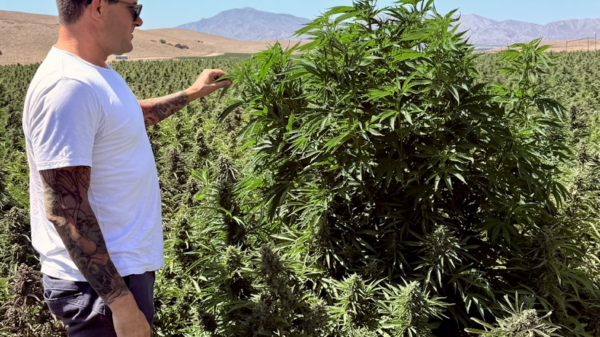Canadian cannabis boards need more diversity or they risk getting stuck in group-think.
That was the warning given by NextLeaf Solutions (CSE: OILS) CEO Paul Pedersen at Vancouver’s The Lift & Co. Corp. (TSXV: LIFT and OTCQB: LFCOF) expo last week.
Read more: Here’s what to expect from Vancouver’s Lift & Co. expo
Read more: Hang tight, better times are coming: Lift & Co. day 1
It’s a rallying cry for diversity that comes from the head of a company with a predominantly white male board and a male-dominated team. Five out of its 19 team members are female.
And that means it’s a rallying cry that should be challenged, Toronto cannabis lawyer Caryma Sa’d told Mugglehead.
“Talk is cheap,” she said. “We’re now at a point where it is very difficult for someone to argue against diversity.” Therefore, companies that call for diversity need to put it into action within their own company, she added.
But NextLeaf isn’t alone in having predominantly white male board members and senior management employees.
The board rooms of big cannabis companies like GW Pharmaceuticals (NASDAQ: GWPH), Canopy Growth (TSX: WEED and NYSE: CGC), Cronos Group (TSX: CRON and NYSE: CRON) and Aurora Cannabis, Inc. (TSX: ACB and NYSE: ACB) are mostly white men and a few white women.
Tilray, Inc. (NASDAQ: TLRY) has three women on their five-person board — all who are white.
It’s important to specifically have Black people (plural). Anti-Black racism isn’t exclusive to white people, it can manifest in POC communities as well. And there can be weird dynamics in terms of appropriation, see: Akwafina, Lily Singh
— Caryma Sa'd – Lawyer + Political Satirist (@CarymaRules) January 12, 2020
So why is cannabis so white?
On the ground level the weed industry is multicultural, but the higher you go up the corporate ladder, the less it looks like the cannabis industry itself, Sa’d said.
“Diversity and quality — they’re not opposite ends of the spectrum. If we’re genuinely looking for the best people to fill the seats, you will naturally end up with a more diverse organization. If you were truly basing it on merit,” she said.
Companies that end up with white male-dominated boards and senior leadership teams need to ask themselves how they got that way, she said. Then they need to ask if the company should change its hiring criteria or question the pool of candidates it hires from.
“There is such an imbalance right now that I don’t think the status quo can be changed without a disruption,” Sa’d said. “Businesses, as much as they might try to portray themselves as being cutting-edge, risky or edgy, there’s still a conservative mindset there.”
Diversity also needs to be more than having a single person of colour or woman on your board, she said. While one person’s voice can add a wealth of experience, their perspective is still limited. The more representation you have within your company, Sa’d said, the more experiences that company can pull from.
“In its natural state this industry already has creators, thinkers and innovators who are diverse. It’s not that we’re creating something where nothing existed. It’s more about bridging and ensuring people can cross the bridge,” she said.
Diversity improves the bottom line
Hiring people of colour and women will also help cannabis companies survive the cash-strapped times to come, Hill+Knowlton Strategies national cannabis sector lead Omar Khan told Mugglehead.

TerrAscend’s (CSE: TER) founder and CEO, Michael Nashat, is the only person of colour heading a Canadian cannabis company, Hill+Knowlton Strategies national cannabis sector lead Omar Khan said. And that means the rest of the industry is missing out. Photo courtesy of Omar Khan.
“The lack of diversity at the board and senior management level blinds a lot of the cannabis industry to both the economic and political power of multicultural communities in this country today,” Khan said.
Multicultural communities, like the greater Vancouver and Toronto areas, hold market potential largely untapped by the cannabis industry. That’s because stigma towards drug use remains high, especially in South and East Asian communities, he said. But without board members from these communities, how would a company know that? Khan asked.
Ignoring multiculturalism also means the industry won’t be able to change restrictive government regulations any time soon, he said.
Many swing ridings for both provincial and federal governments are multicultural — and if these ridings don’t care about cannabis, he says there is no incentive for politicians to get involved.
“This is not something unique to the cannabis industry, I think it’s an issue prevalent across corporate Canada,” Khan said.
“What is unique to the cannabis industry is how much of an immediate impact it is having on their bottom line. Both from a hindrance of expansion of the consumer base, but also reducing or limiting the political capital the industry has to fight back against problematic regulatory frameworks.”
michelle@mugglehead.com
@missmishelle













